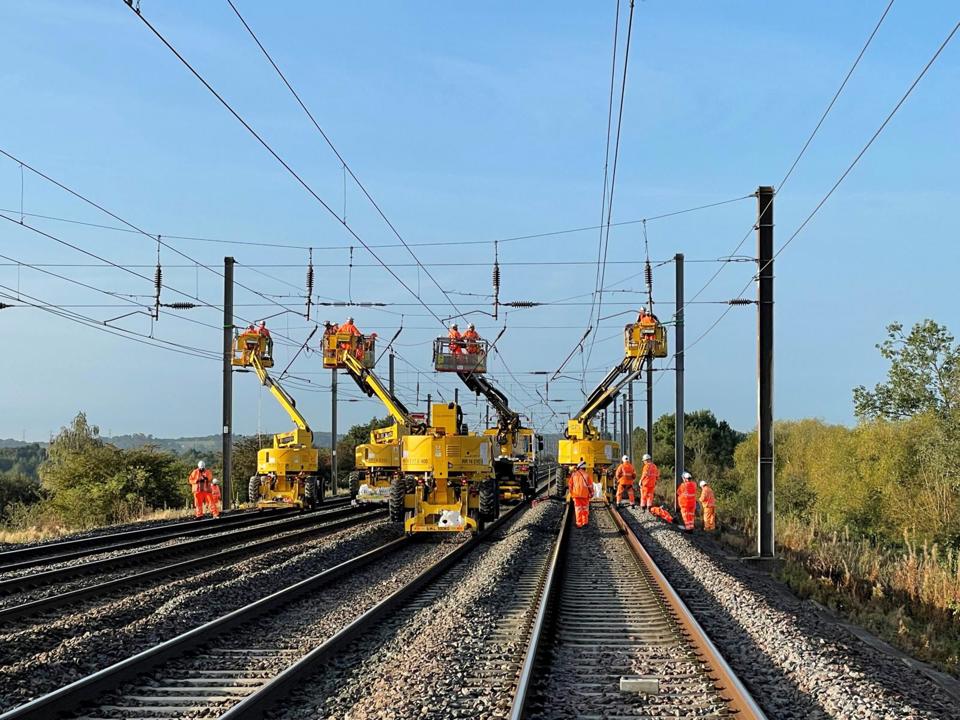Benefits could come from developing battery power, argues Noel Dolphin of OLE supplier Furrer+Frey.
If there’s one trend of the 21st century, it’s been to put batteries in everything: vacuum cleaners, blenders, cars, scooters, and bikes.
Benefits could come from developing battery power, argues Noel Dolphin of OLE supplier Furrer+Frey.
If there’s one trend of the 21st century, it’s been to put batteries in everything: vacuum cleaners, blenders, cars, scooters, and bikes.
The technology has developed such that Great Western Railway, South Western Railway, Chiltern Railways, ScotRail, East West Rail, and even Network Rail are planning for a future of their widespread rollout in rail - in concert with a patchwork of electrification that will now have two jobs: powering a moving train, and charging its onboard batteries.
A rolling programme
Network Rail thinkers have recently acknowledged, in updated decarbonisation plans, that electrification is vital for rail freight, and that reaching a point where the passenger network can adopt widespread battery-pantograph hybrids would require 6,000 single-track kilometres (stk) of further electrification.
That’s about half of what was proposed in the previous draft Traction Decarbonisation Network Strategy (TDNS) at a rate of 200-250stk per year.
Huzzah. We have a rolling programme that can sustain Britain’s engineering expertise and serve as a platform to build upon.
It makes perfect sense, under this scenario, to kick off with the freight ‘infill’ approach proposed by the Chartered Institute of Logistics and Transport - wiring the short sections of track that currently preclude so much of our freight from using electric power, such as the short branch (a few kilometres) to London Gateway port.
Acknowledging freight’s need for electrification is positive. Discontinuous allows us to identify parts of freight routes that need the most tractive effort, and use this as a springboard for future electrifications. However, discontinuous gives us additional considerations.
Time is running out
Firstly, decisions about the future of electrification are urgent. We are already in the bust part of our boom-and-bust electrification cycle.
NSAR’s (National Skills Academy for Rail) electrification and plant workforce data shows that we’ve lost approximately 7,000 workers since 2018, along with the skills, knowledge and experience needed to deliver value for money.
So what do we need?
The basics first: continuation of Midland Main Line and Transpennine Route Upgrade. Control Period 7 renewal works are outlined, and procurement is under way.
In the near term, a decision on what to electrify on East West Rail and the development of a programme of so-called ‘no regrets’ freight infill.
Together, these would stem these losses and keep the skills base ticking over in the short term, with a future pipeline to plan around.
Britain’s engineers have led the development of discontinuous electrification. But while we get excited about the future, we risk losing the engineering skills we have now.
Reform, nationalisation and devolution
The second aspect to consider is reform.
Reform of the railway itself and regional governance in England presents new opportunities. With track and train brought onto the national balance sheet, the logic should be to opt for the lowest total lifetime cost of traction power for track and train.
I am convinced that electrification, discontinuous or full electrification, wins this outright in many (but not all) cases.
Furthermore, devolved mayors will want more say over the railway - and potentially the funding, financing, and fare-setting powers to exercise this authority. Just look at Greater Mancheter Mayor Andy Burnham’s plans for a Greater Manchester commuter rail network.
They, too, will want the best-performing, lowest total-cost railway to keep fares down, while maintaining reliability and capacity.
Uncertainty
Batteries are key to the rail system. They can add resilience, support a rolling programme, and allow lines that would otherwise never have a business case for electrification.
However, they are not a silver bullet.
Electrification costs have come down since the last ‘boom’ cycle, and many of the issues that plagued Great Western electrification have been solved.
For instance, a significant cost driver was the need for civil interventions and the requirement to raise bridges to accommodate wires. This issue has already been addressed in modern electrification systems, and the need to raise bridges is essentially a thing of the past.
Bi-mode rolling stock with power changeover points introduces a vulnerability in the existing network, and its complexity could result in reduced reliability - something the industry is already addressing with the Rail Safety and Standards Board’s study on reliable power changeovers.
Works to ‘discontinue’ electrification are not inexpensive, as supplying 25kV power to isolated sections of an overhead line is costly and removes a key benefit of conventional electrification - it is its own distribution system. Discontinuous solutions will require careful planning to avoid these issues and generate real savings.
I welcome Network Rail’s acknowledgement that rail freight requires electrification, and this is a good starting point for building a modest rolling programme.
This programme will incorporate a combination of different solutions. However, decisions about the future projects need to be made urgently.
Rail reform and devolution will bring more opportunities to fund enhancements, but also pressures to keep fares down. I’m optimistic that when we look across the track and train, the case for electrification will be strengthened.

Noel Dolphin is Head of UK Projects at Furrer+Frey.
Login to continue reading
Or register with RAIL to keep up-to-date with the latest news, insight and opinion.



















Login to comment
Comments
No comments have been made yet.